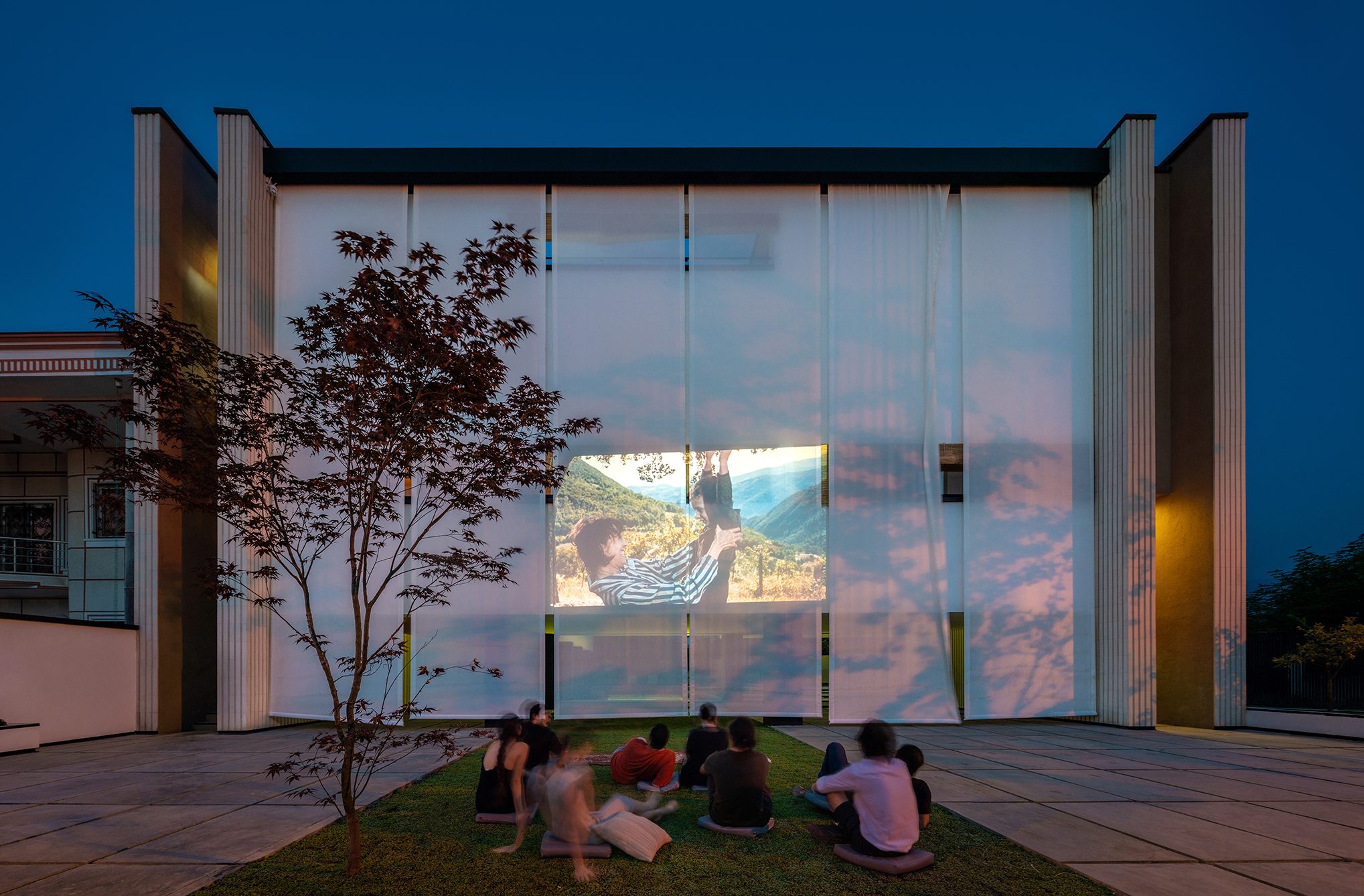ABBASABAD – MAZANDARAN – IRAN
SAMON VILLA


Northern Iran is known as a green area with vast and fertile lands. In the past, the urban structure of this area was defined in such a way that the lands had relatively large divisions with agricultural function and the houses were located in the center of these lands in dimensions and proportions smaller than the outer space. So that a major part of the activities of the residents was flowing in the outer space.
But in recent years, due to the problem of population and increase in land price, the structure and division of land has undergone changes and has gradually become small. Today, the dimensions of the lands have reached such a level that practically after the construction of the building, there would not be much useful and usable space of the land and it means the death of daily activities in the outer space. In a way, by removing the open space in these houses, the special life and culture of this area, which was flowing in the outside space, has been completely destroyed.
In the design process, we looked at the old houses of this climate. Wide courtyards and the contrast of two inside and outside lifestyles is the important point. Keeping the idea of these spaces and redefining it in today’s style creates a transitional situation. The state that gives the Samon villa the characteristic of always finding itself in a conflict between tradition and modernity




The main idea of the project is to maintain the ground floor as a platform for the formation of various activities in the dimensions of the entire project site. So that the mass and the internal spaces are suspended on the floor by occupying the smallest possible footprint, and with the placement of the internal space in the upper level, the whole surface of the land is organized in a free and uniform manner with the definition of the yard.
The definition and formation of the suspended mass of the building on the ground floor serves the main idea of the project by creating the lowest level of occupancy in order to maintain the quality of the yard space. This mass (facing the city) is formally coordinated with the surrounding buildings, the privacy of the open space is provided with a movable curtain that sometimes preserves its traditional function and sometimes gives the city a big screen. On the other hand, mass has failed in confronting nature in order to enter light and create spatial diversity, and has become active and dynamic.
Moreover, in the selection of building materials, the use of old materials of the region has been very important in order to return to the same spatial quality in old houses. For this purpose, a combination of cement as a modern and typical material in new houses along with straw, which is one of the original and traditional materials and compatible with the region’s climate, has been used in the building.
It is hoped that this alternative will somehow lead to the revival of activities and the promotion of domestic and foreign lifestyles in the new urban organization of this climate.
